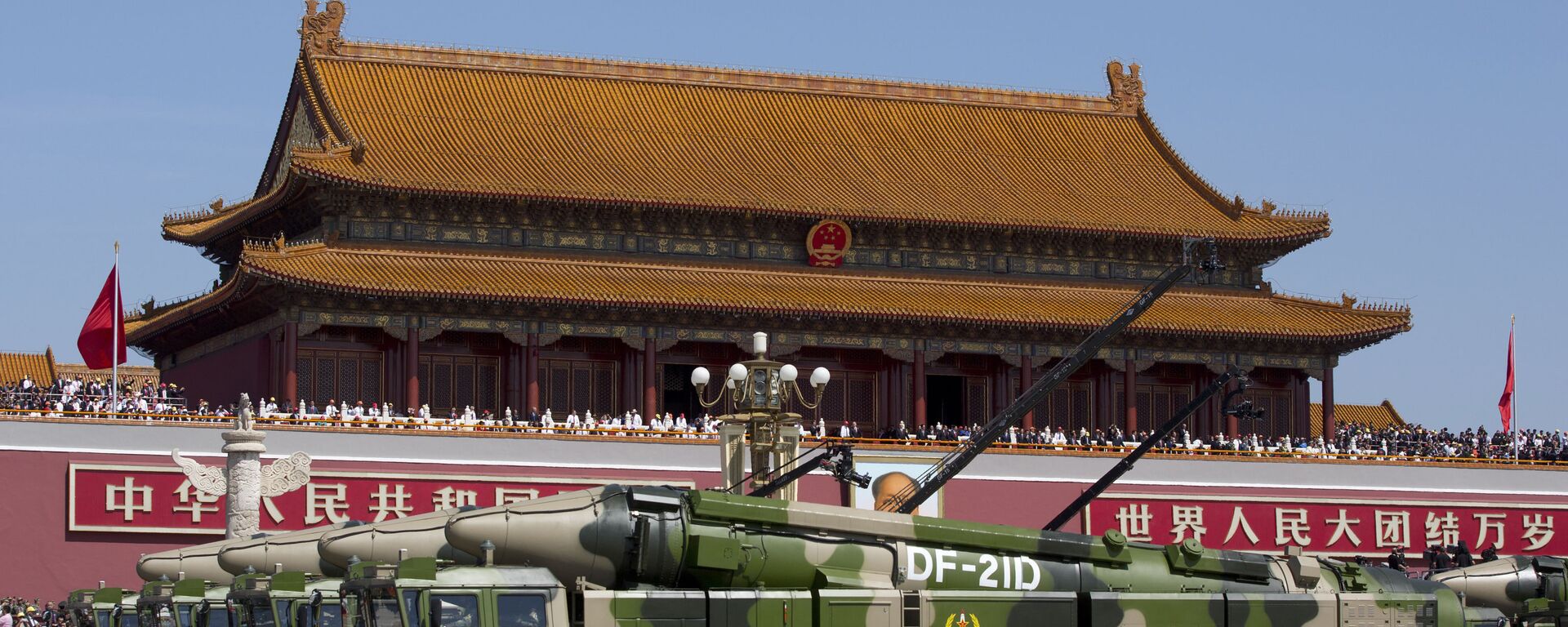https://sputnikglobe.com/20211004/japans-new-pm-accuses-china-of-trying-to-change-status-quo-with-force-in-some-areas-1089651954.html
Japan's New PM Accuses China of Trying to Change Status Quo With Force 'in Some Areas'
Japan's New PM Accuses China of Trying to Change Status Quo With Force 'in Some Areas'
Sputnik International
On Monday, Japanese lawmakers voted to approve the country's ex-Foreign Minister Fumio Kishida as the new prime minister. 04.10.2021, Sputnik International
2021-10-04T12:49+0000
2021-10-04T12:49+0000
2021-10-04T15:23+0000
asia
fumio kishida
japan
china
relations
https://cdn1.img.sputnikglobe.com/img/07e5/0a/04/1089653309_0:0:3073:1730_1920x0_80_0_0_19f0274151aada19ae68eda18cfe161b.jpg
New Japanese Prime Minister Fumio Kishida has accused China of trying to change the status quo with force "in some areas".According to him, there were "some questionable issues in China" related to human rights.At the same time, the new Japanese prime minister touted China as Japan's largest trading partner, calling to continue discussions with Beijing.Tokyo and Beijing remain at loggerheads over a group of uninhabited islands in the East China Sea, as well as issues related to Taiwan and Hong Kong.Tokyo maintains it has had sovereignty over the islands since 1895, while Beijing claims that the islands are marked as a Chinese territory on Japanese maps circa 1783 and 1785. Beijing does not recognise Japan claiming control over the islands, referring to the territory as the "Diaoyu Islands". Tokyo opposes Beijing's ships sailing in the vicinity of the disputed territory, calling them "unacceptable incursions". On Taiwan, Japan, along with the US, reacts angrily to China considering the island an essential part of its territory. As for Hong Kong, Tokyo said earlier this year that it had “grave concerns” at the situation in the city and that it “cannot tolerate mass arrests” that allegedly took place there. It was an apparent nod to the arrests made by China under a Hong Kong security law passed in June 2020.Beijing and the Hong Kong government argue that the new law only serves to safeguard China's national security, while respecting people's liberties as well as the region's special status. But a large number of countries in the West view the legislation as undermining Hong Kong's autonomy.Hong Kong, a former British colony, was handed back to China in 1997, and has been governed under the principle "one country, two systems" since then.
https://sputnikglobe.com/20210713/japan-concerned-with-chinas-lack-of-transparency-in-military-spending-1083373663.html
japan
china
Sputnik International
feedback@sputniknews.com
+74956456601
MIA „Rosiya Segodnya“
2021
Oleg Burunov
https://cdn1.img.sputnikglobe.com/img/07e4/09/0b/1080424846_0:0:2048:2048_100x100_80_0_0_3d7b461f8a98586fa3fe739930816aea.jpg
Oleg Burunov
https://cdn1.img.sputnikglobe.com/img/07e4/09/0b/1080424846_0:0:2048:2048_100x100_80_0_0_3d7b461f8a98586fa3fe739930816aea.jpg
News
en_EN
Sputnik International
feedback@sputniknews.com
+74956456601
MIA „Rosiya Segodnya“
Sputnik International
feedback@sputniknews.com
+74956456601
MIA „Rosiya Segodnya“
Oleg Burunov
https://cdn1.img.sputnikglobe.com/img/07e4/09/0b/1080424846_0:0:2048:2048_100x100_80_0_0_3d7b461f8a98586fa3fe739930816aea.jpg
fumio kishida, japan, china, relations
fumio kishida, japan, china, relations
Japan's New PM Accuses China of Trying to Change Status Quo With Force 'in Some Areas'
12:49 GMT 04.10.2021 (Updated: 15:23 GMT 04.10.2021) On Monday, Japanese lawmakers voted to approve the country's ex-Foreign Minister Fumio Kishida as the new prime minister.
New Japanese
Prime Minister Fumio Kishida has accused China of trying to change the status quo with force "in some areas".
Speaking to reporters on Monday, Kishida stressed that the Japanese government "must closely watch whether China can meet the high levels required by the TTP [the Trans-Pacific Partnership agreement] on matters such as state-owned companies and information security".
According to him, there were "some questionable issues in China" related to human rights.
At the same time, the new Japanese prime minister touted China as Japan's largest trading partner, calling to continue discussions with Beijing.
The remarks come after Chinese Foreign Ministry spokeswoman Hua Chunying told a press conference last week that Beijing "is willing to work together with Japan's new governing team […] to deepen pragmatic cooperation in various areas and promote the healthy and stable development of Sino-Japanese relations".
Tokyo and Beijing remain at loggerheads over a group of
uninhabited islands in the East China Sea, as well as issues related to Taiwan and Hong Kong.
Tokyo maintains it has had sovereignty over the islands since 1895, while Beijing claims that the islands are marked as a Chinese territory on Japanese maps circa 1783 and 1785.
Beijing does not recognise Japan claiming control over the islands, referring to the territory as the "Diaoyu Islands". Tokyo opposes Beijing's ships sailing in the vicinity of the disputed territory, calling them "unacceptable incursions". On Taiwan, Japan, along with the US, reacts angrily to China considering the island an essential part of its territory.
As for Hong Kong, Tokyo said earlier this year that it had “grave concerns” at the situation in the city and that it “cannot tolerate mass arrests” that allegedly took place there. It was an apparent nod to the arrests made by China under a Hong Kong security law passed in June 2020.
Beijing and the Hong Kong government argue that the new law only serves to safeguard China's national security, while respecting people's liberties as well as the region's special status. But a large number of countries in the West view the legislation as undermining Hong Kong's autonomy.
Hong Kong, a former British colony, was handed back to China in 1997, and has been governed under the principle "one country, two systems" since then.






